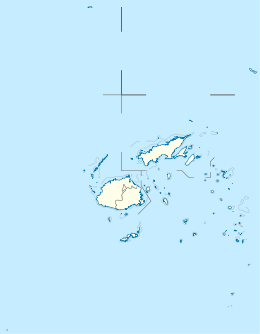 Tuvana-i-Ra (left) and Tuvana-i-Colo (right) | |
| Geography | |
|---|---|
| Coordinates | 21°00′45″S178°45′00″W / 21.01250°S 178.75000°W |
| Archipelago | Lau Islands |
| Adjacent to | Koro Sea |
| Total islands | 1 |
| Area | 2.25 km2 (0.87 sq mi) |
| Length | 1.7 km (1.06 mi) |
| Width | 1.65 km (1.025 mi) |
| Administration | |
Fiji | |
| Division | Eastern |
| Province | Lau Province |
| Demographics | |
| Population | Uninhabited |
Tuvana-i-Colo is a small island in the southeastern part of the island state of Fiji in the Pacific Ocean. It has three structures visible on satellite imagery, [1] but it is unknown whether the island is inhabited. It is the second most southern atoll of the Lau archipelago and represents Fiji's third most southern landmass. It is located about 25 km south of Ono-i-Lau, the southernmost inhabited Fijian atoll, and 8 kilometres east-northeast of the neighboring atoll Tuvana-i-Ra. It is completely surrounded by a fringing reef.
